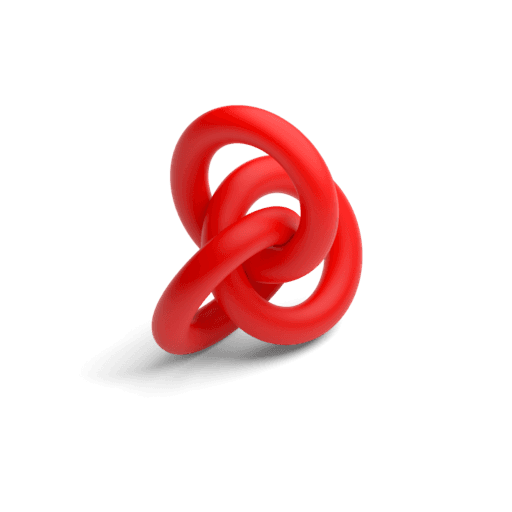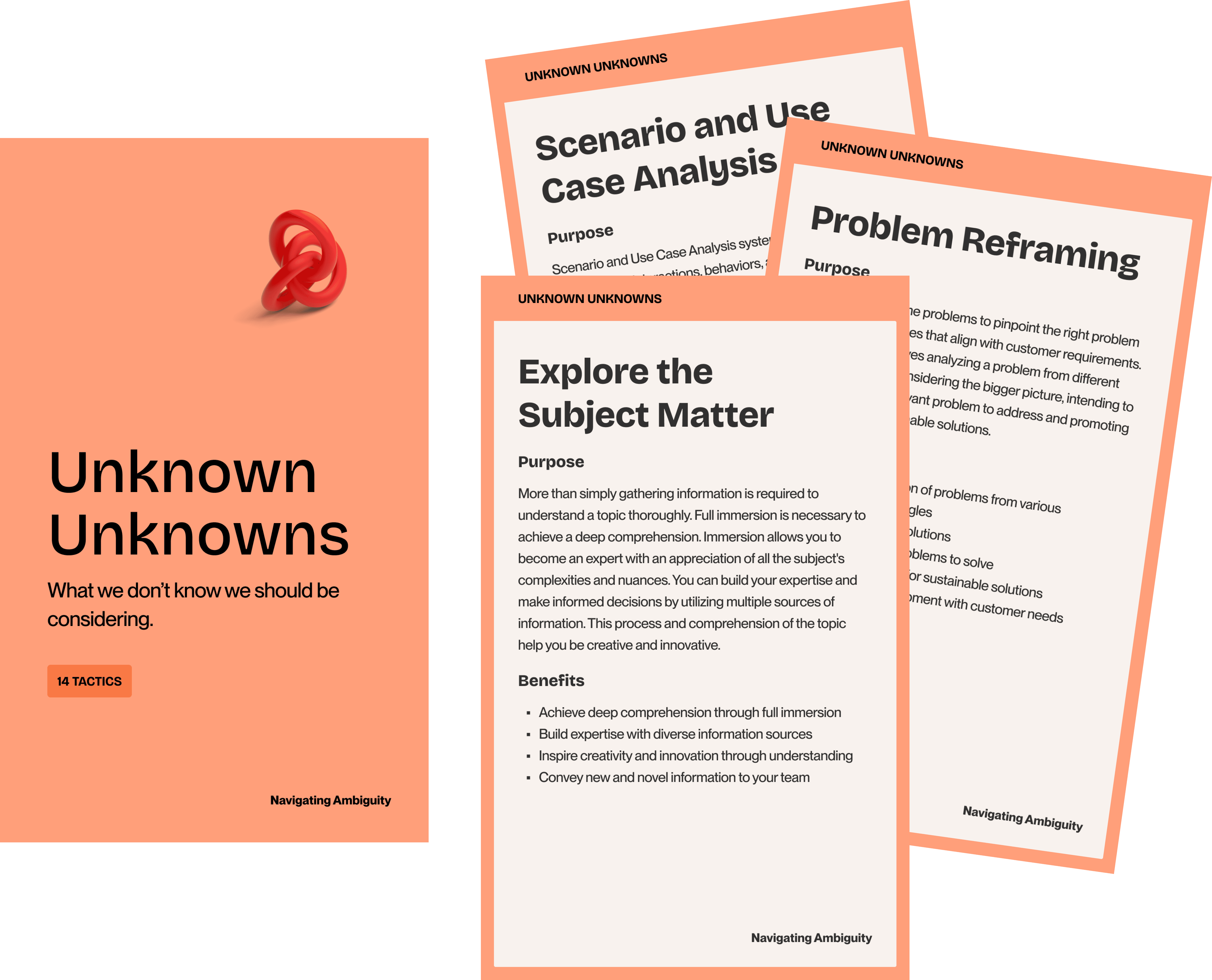Known Knowns
Known Unknowns
Unknown Knowns
Unknown Unknowns
What types of formats are available for the resources?
The toolkit includes a context-setting guide, workbook, how-to-use guide, tips, and digital card deck. The guide, workbook, how-to-use guide, and tips are available in PDF format, while the digital card deck is available as individual cards in JPG format and as a printable PDF.
Is this toolkit suitable for remote teams?
Absolutely! In fact, this kit is designed to work with remote teams. All the materials are digital and are easy to share in meetings or workshops.
Can I get a refund if I’m not satisfied?
Yes, we offer a 15-day money-back guarantee if you’re unsatisfied with the toolkit.
How do I access the toolkit after purchase?
Upon purchase from a trusted third-party hosted checkout, you’ll receive an email with a download link to access all the digital resources in the toolkit.
Is my payment information secure?
All transactions are encrypted using SSL technology through Lemon Squeezy, a hosted checkout platform.
Can I share the toolkit with my team?
You can share the toolkit materials and digital cards during meetings and workshops, but you are not allowed to distribute or share them outside of that context.
Are there any prerequisites for using this toolkit effectively?
The toolkit suits beginners and professionals; no prior knowledge is necessary.
Do you offer any bulk or team discounts?
Bulk discounts for purchases of multiple licenses are available. Please get in touch with us for more information.
What support is available if I have questions or issues?
Customer support is available; please get in touch with questions.
What is the permitted use of these materials?
You are permitted to use the materials for work, learning, and workshop sessions as long as they are not the only content of your course. It is not allowed to present the materials publicly, copy, distribute, resell, modify, or use them in derivative works. If you use the content, make sure to attribute the original creators. If you violate the license terms, it may result in the revocation of the license. Detailed License Information Permitted Uses Use the materials for work or learning. Conduct workshops with coworkers or students, but don’t use the materials as the sole course content. Always attribute the content to “Developed by Jess Eddy (jesseddy.com).” Note: this doesn’t imply endorsement of your usage. Prohibited Uses Please don’t use the material as a standalone training module or present it in public forums. Copying or distributing the purchased material is not allowed. Reselling or creating derivative works from this material is prohibited. Do not remove any copyright or ownership notices. Modifying, altering, or adapting the materials is not permitted. Violation of these terms may result in license revocation.












































